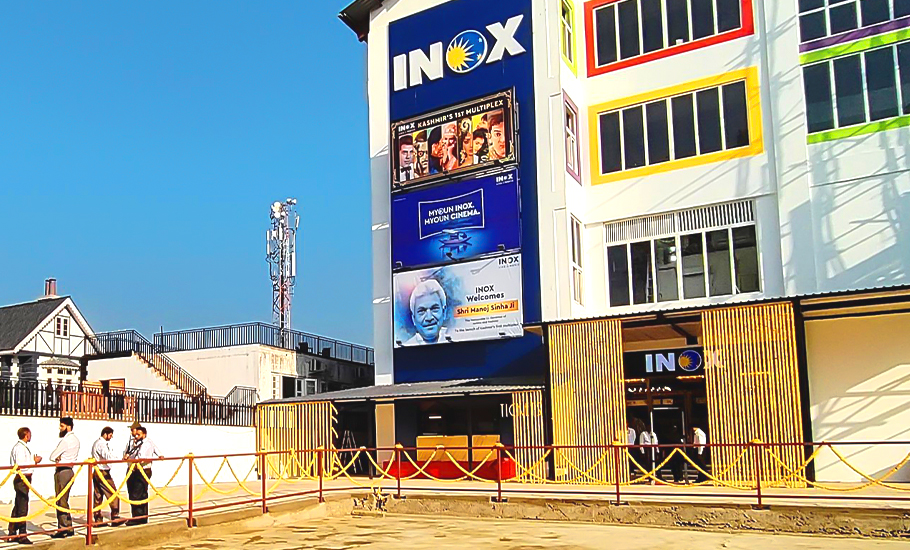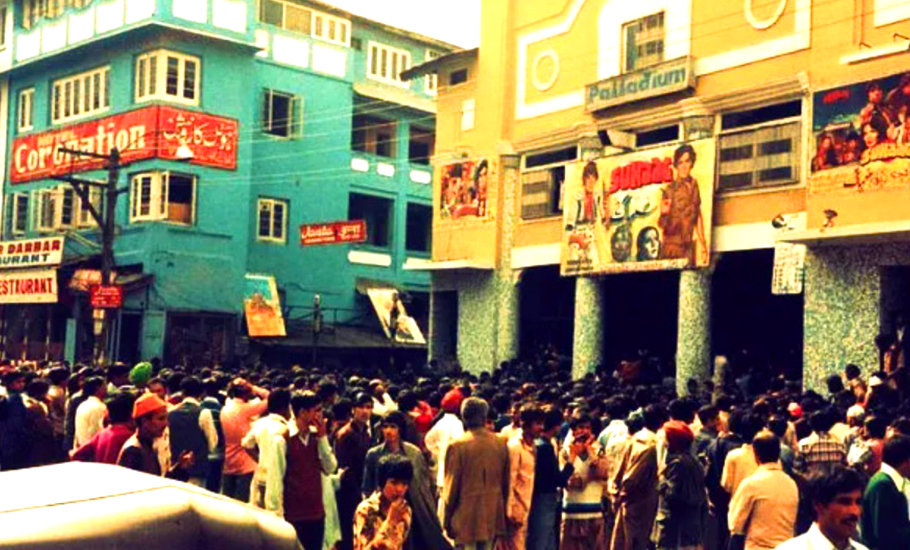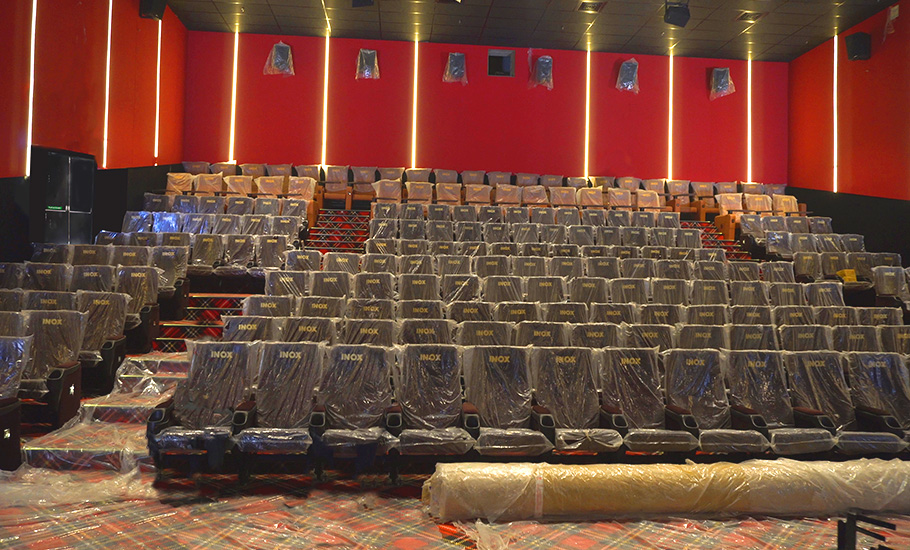
- Home
- News
- Analysis
- States
- Perspective
- Videos
- Education
- Entertainment
- Elections
- World Cup 2023
- Features
- Health
- Budget 2024-25
- Business
- Series
- NEET TANGLE
- Economy Series
- Earth Day
- Kashmir’s Frozen Turbulence
- India@75
- The legend of Ramjanmabhoomi
- Liberalisation@30
- How to tame a dragon
- Celebrating biodiversity
- Farm Matters
- 50 days of solitude
- Bringing Migrants Home
- Budget 2020
- Jharkhand Votes
- The Federal Investigates
- The Federal Impact
- Vanishing Sand
- Gandhi @ 150
- Andhra Today
- Field report
- Operation Gulmarg
- Pandemic @1 Mn in India
- The Federal Year-End
- The Zero Year
- Premium
- Science
- Brand studio
- Home
- NewsNews
- Analysis
- StatesStates
- PerspectivePerspective
- VideosVideos
- Entertainment
- ElectionsElections
- Sports
- Loading...
Sports - Features
- Budget 2024-25
- BusinessBusiness
- Premium
- Loading...
Premium

Screen or smokescreen? What the return of movie halls in Kashmir means

A full 32 years after cinema halls were forced to shut shop in Kashmir, Vikram Vedha and Ponniyin Selvan-I today will mark Kashmir’s first-ever tryst with multiplex at the new INOX theatre in Srinagar – the Union Territory’s summer capital. On 20 September, Jammu and Kashmir’s Lieutenant Governor Manoj Sinha inaugurated INOX multiplex in Srinagar. In his congratulatory message to the...
A full 32 years after cinema halls were forced to shut shop in Kashmir, Vikram Vedha and Ponniyin Selvan-I today will mark Kashmir’s first-ever tryst with multiplex at the new INOX theatre in Srinagar – the Union Territory’s summer capital.
On 20 September, Jammu and Kashmir’s Lieutenant Governor Manoj Sinha inaugurated INOX multiplex in Srinagar. In his congratulatory message to the INOX Group and people involved in the latest initiative to ‘revive’ cinema in Kashmir, Sinha called the return of movies to Kashmir “a reflection of a new dawn of hope, dreams, confidence, and aspirations of people”. Two days earlier, Sinha had inaugurated two multipurpose theatres in Shopian and Pulwama – the twin districts in the volatile south Kashmir.
As Bollywood flicks return to restive Kashmir after a gap of three decades, the administration in Jammu and Kashmir is claiming revival of cinema by throwing open a multiplex in Srinagar but many on the ground say that cinemas cannot be used as a normalcy indicator amid deceptive peace.
The more than three decades in which theatres were missing from Kashmir couldn’t wipe out the memories of the time when some people would draw parallels between Srinagar’s vibrant Polo View Street and London’s Piccadilly. The time when cinema, theatre, coffee houses and literary clubs were very much a part of the Valley’s socio-cultural setting and literary flavour.
Brooklyn Girls
Mir Khalid, a surgeon by profession and the author of Jaffna Street: Tales of Life, Death, Betrayal and Survival in Kashmir, has recollections of his school days in the 1980s. “At least five cinema halls in the heart of Srinagar would screen twin shows of Hollywood films on a daily basis. Srinagar city had the choicest blend of movies catering to its movie aficionados. Movies of Al Pacino, Robert De Niro, Jack Nicholson, Brooke Shields, Bo Derek, Sylvester Stallone and later Tom Cruise formed the bulk of the conversations in schools and on college grounds.”

Mir has written a detailed account of Rod Stewart’s Downtown Train, a film released in March 1990, in his book. Srinagar’s downtown of Mir’s imagination has parallels with Stewart’s downtown in the movie, replete with its own version of ‘Brooklyn girls’.
“There were many ‘Brooklyn girls’ whose affections were actively sought or passively fancied. Some were part of the somewhat class-conscious crowd, belonging to upmarket areas and schools, many of whom adored Tom Cruise – whose Top Gun was making waves – to the extent of pasting his photos in their notebooks,” the author writes in a chapter titled ‘Downtown Train’.
Nostalgia
Before the eruption of armed militancy in Jammu and Kashmir, there were about a dozen halls screening Hollywood and Bollywood movies in Kashmir. At least nine of them were operating in Srinagar alone: Firdous (Hawal), Shiraz (Khanyar), Khayam (Khanyar), Shah (Qamarwari), Regal (Residency Road), Palladium (Lal Chowk), Neelam , Broadway (Badamibagh), and Naaz. In north Kashmir’s apple town, Sopore, a cinema hall by the name of Samad Talkies was quite famous. The lesser-known movie halls included Shahkar, Kapra, Thimaya, Regina, Heemal, Marazi, Zorawar in north Kashmir’s Sopore, Baramulla, Handwara and Kupwara towns.
“Our short story writers, dramatists, authors and poets earned fame and sharpened their art after drawing inspiration from classical cinema. Cinema was a creative medium for them and also a source of intellectual stimulation,” said Mohammad Amin Bhat, Valley’s well-known theatre director and television anchor.
Ghulam Mohammad, a Srinagar resident in his early 50s, fondly recalled his youthful days when he would enthusiastically buy tickets to watch movies in theatres. Standing outside the Shiraz cinema (not in business anymore) in Srinagar’s Khanyar area — presently a security camp for the Central Reserve Police Force (CRPF) personnel — he told The Federal: “I have watched many movies here. I remember watching movies such as Kalicharan, Dharmatma and Bahut Din Huwe etc. I don’t know whether or not the clock will turn back.”
Immediately after the outbreak of militancy in Kashmir, a complete ban was placed on screening movies in cinema halls. The screening of the genre of movies has also attracted much controversy in the past. As a result of attacks and threats, most of the cinema halls turned into military bunkers and paramilitary camps. Many of them lie in ruins since.
Bans by state and non-state actors
Kashmiris are not averse to cinema and are usually cinema-goers outside the Valley and in the foreign lands, but cinema has historically remained controversial in Kashmir and faced bans by both the state as well as non-state actors at various junctures.
Cinema and controversy, in fact, go hand in hand in Kashmir.
A few armed groups had disallowed the screening of Bollywood and Hollywood movies in Kashmir in the early 1990s.
Before that in the early 1980s, the Anthony Quinn-starrer, Lion of the Desert, was screened at Regal cinema in Srinagar. It was an action film based on the life of the Libyan revolutionary Omar Mukhtar, a Bedouin leader who fought the colonial Italian army in the years leading up to World War II. Its screening in Kashmir around 1981-82 had inspired native Kashmiris to protest against New Delhi. Widespread demonstrations were witnessed in Srinagar. The government immediately banned the screening of the movie.
Air Marshal Noor Khan, a militant commander of a lesser-known outfit Allah Tigers, on August 18, 1989, announced a ban on cinemas and bars through local newspapers. The stated aim appeared to shut these popular public hangouts. Allah Tigers also launched a vociferous campaign against the sale and consumption of alcohol, and the operation of video libraries. Fearing reprisals, most liquor shops in Srinagar and other towns of the Valley closed down.
Over the years, the missing cinemas and what cinema meant for the commoners in the Valley often came up for discussion, though without much success.
Revival attempts
Naeem Akhtar, former minister for Public Works and chief spokesperson of the People’s Democratic Party (PDP)-led coalition government with its former alliance partner the Bharatiya Janata Party (BJP), while inaugurating the five-day long Kashmir World Film Festival (KWFF) in Srinagar, on November 1, 2017, had told this writer, “Today, every room is a movie hall, every pocket a cinema. But people do have a right to social outings and recreation too. They want to go out to watch movies in cinema halls and multiplexes and also visit malls for shopping.”
This was a time when a fresh debate had started on whether it was about time to reopen movie halls in Kashmir after a yawning gap.
During the film festival, 19 documentary and feature films in English, Italian, Persian, Japanese, Polish, Urdu, Kashmiri, Dogri, Ladakhi, and Malayalam were screened at Srinagar’s Tagore Hall.
Mushtaaque Ali Khan, then director of KWFF, said the aim was to revive an almost “lost culture of watching good movies in Kashmir”.
“I want our people to watch good movies. And also provide a genuine platform to local up-and-coming filmmakers and enthusiasts to find inspiration by meeting top film personalities,” Khan said.
Mixed emotions
While the revival of the multipurpose theatres in Shopian and Pulwama and the first-ever multiplex cinema hall in Srinagar has ended the long wait for many in the Valley who would watch movies in Jammu and other parts of the country during their travels, there is also a sense of suspicion on what has prompted the government’s move.
Many are of the view that the current dispensation is trying to paint a false picture of normalcy and peace in Kashmir by reopening or reviving cinemas in the Valley. Most, however, feel scared and fear reprisal to say this on record.

Muslim Jan, a media expert and academic who formerly served as a faculty member at the University of Kashmir’s Media Education Research Centre (MERC), warned against the idea of using cinema as a tool to paint deceptive peace as normalcy. According to Jan, cinema cannot be showcased as a false indicator of peace or a symbol of normalcy. Revival of cinema is not a carpet under which one would want to bury the region’s political uncertainty and the burning issues.
“I am a commoner. In the present situation, neither I would visit a cinema hall nor will I allow my kids to go there. Real issues are a priority for people like me, not cinema,” she added.
A senior lawyer, on the condition of anonymity, said he would go and watch a movie in theatres of London and New York, but won’t do it in Srinagar. “Here, the purpose is not to show a movie. It is to erase our memory of the past and create a new memory.”

